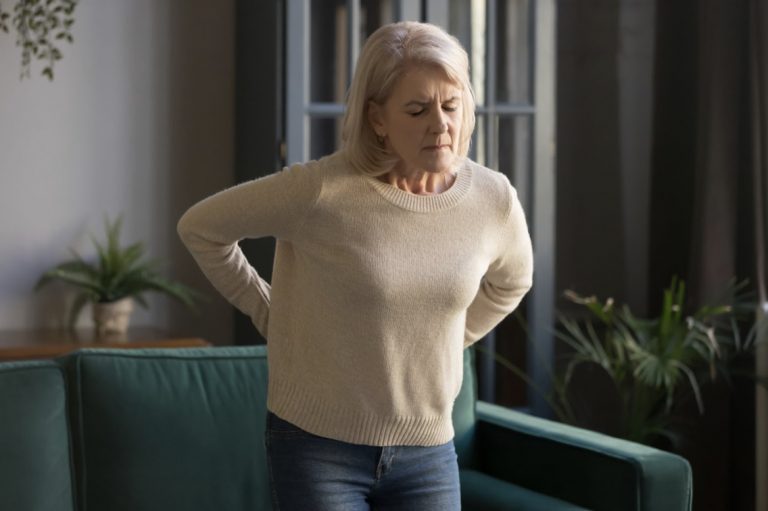Bones spurs, or osteophytes, are naturally occurring growths that occur as a result of bone-on-bone friction. Often associated with arthritis, bone spurs are an attempt to stabilize joints that have lost natural cushioning. However, they can also cause problems of their own, including joint stiffness, aches, and grinding and popping sensations.
Additionally, bone spurs can cause painful nerve compression that leads to symptoms such as shooting pain, tingling, numbness, and muscle weakness. This is especially common for bone spurs in the spinal column, although this can occur anywhere bone spurs pinch a nerve. If you have been diagnosed with a bone spur for your chronic pain, it is important to follow medical advice and be proactive about your treatment.
Educating yourself as a patient, including the causes and risk factors of bone spur development, is an important step. This knowledge can help with treatment and with prevention of the condition either worsening or new bone spurs developing. As you read this guide, we ask you to reach out to our caring team if you have any questions or to learn more about your treatment options for bone spurs.
Natural wear and tear are a major risk factor for bone spurs
As mentioned above, bone spurs are often a side effect of arthritis. Especially the form is known as osteoarthritis. Osteoarthritis, or “wear and tear” arthritis, occurs because of natural changes to the body, combined with the cumulative stress of years of activity.
Our joints enable all regular movement, but this requires the ends of bones to run against each other over and over again. To reduce friction and allow for smooth motion, joints throughout the body are protected by a layer of cartilage and lubricated by fluid.
As we get older, our bodies basically dry out, causing the cartilage to become brittle and the joint fluid to dry up.
Osteoarthritis develops when cartilage wears out, and increased bone-on-bone friction causes joint inflammation and instability.
Bone spurs are the skeleton’s natural response to this. The friction triggers increased growth in an attempt to stabilize the joint and reduce friction.
Other bone spur risk factors are injury, obesity, posture, diet, and exercise
While no one can prevent the natural aging process, or stop natural wear and tear on the joints, there are other risk factors that contribute to bone spurs.
Many of these can be controlled by patients, including:
- Injury — Frequent or serious injuries can stress the joints, speeding up regeneration and raising the risk of arthritis and bone spurs.
- Obesity — Extra body weight adds to joint load with every step. Healthy body weight can potentially slow down wear and tear on cartilage over time.
- Posture — Poor posture and body mechanics lead to uneven weight distribution, which puts stress on the joints and makes bone spurs more likely to grow.
- Lifestyle — A sedentary lifestyle and poor nutrition are associated with an increased risk of joint degeneration and bone spur growth.
It may not be possible to completely avoid and prevent bone spur growth, but following medical advice and practicing a healthy lifestyle that includes proper posture and avoiding injury can lower the chances of bone spurs. It can also help lessen their severity if bone spurs do occur.
Seek medical advice that can help you find lasting relief
Bone spurs do not necessarily cause painful symptoms, in which case doctors may not recommend treatment. For many, bone spur symptoms are similar to arthritis symptoms of pain, aches, joint stiffness, and grinding.
Basic treatments such as rest, ice, using a heating pad, over-the-counter nonsteroidal anti-inflammatory drugs (NSAIDs), and gentle stretching are the standard medical advice.
Physical therapy and anti-inflammatory pain management injections may also help, particularly in more severe cases that involve nerve compression.
Surgery will be recommended in cases where a bone spur is causing pain and has not responded to other treatment options. Procedures involve accessing the joint where the bone spur has grown, such as one of the facet joints in the spine, and removing enough bone spur material to relieve pressure on the nerve.
Thanks to the continual development of surgical techniques and microtechnology, surgeons are able to perform this procedure on an outpatient basis. This can help contribute to a quicker recovery and less risk of certain complications compared to hospital-based inpatient procedures.
To learn more about the full range of treatment options for bone spur symptom relief, contact BEST Health System today. Our caring team can help you create a full personalized treatment plan that is right for your needs and lifestyle.
